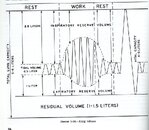I'm going to keep posting this when these threads come up in the hope they will end up in the search results for people looking into the safety of these things before using them.
by @Dr Simon Mitchell
...Full face snorkel masks have been raised in this thread several times. You may be interested in a study we recently published exploring their propensity for generating hypoxia or hypercapnia in comparison to a normal snorkel. See attached or Full-face snorkel masks increase the incidence of hypoxaemia and hypercapnia during simulated snorkelling compared to conventional snorkels ...
by @lowwall
Thanks for the article which is further evidence of the unsuitability of full face snorkel masks. If nothing else, it puts to rest the claim that the inclusion of one way valves completely prevents rebreathing of exhaled gases. Further, your test may well be a best case scenario for these things in that your subjects were experienced snorkelers, the testing was done in the dry so anxiety induced shortened breathing cycles were not an issue, and the testing was cut off as soon as subjects hit a threshold oxygenation level which prevented discovery of just how bad things could get. Even so, the increase in CO2 and decrease in blood O2 saturation when using these masks was alarming.
And this would just be the triggering effect in an incident. What happens next is what I feel is the real culprit. People using standard snorkels normally respond to breathing or O2/CO2 issues like shortness of breath by removing the snorkel. This is trivially simple with a snorkel, you just spit it out. But it can be a major undertaking with a snorkel mask, requiring at least one hand and typically two. Worse, a major reason people chose these masks is they are afraid of immersing their faces in water. These people are going to be loathe to even attempt removal until it's too late.
IMO, these full face masks are dangerous and defective by design.
by @Dr Simon Mitchell
...Full face snorkel masks have been raised in this thread several times. You may be interested in a study we recently published exploring their propensity for generating hypoxia or hypercapnia in comparison to a normal snorkel. See attached or Full-face snorkel masks increase the incidence of hypoxaemia and hypercapnia during simulated snorkelling compared to conventional snorkels ...
by @lowwall
Thanks for the article which is further evidence of the unsuitability of full face snorkel masks. If nothing else, it puts to rest the claim that the inclusion of one way valves completely prevents rebreathing of exhaled gases. Further, your test may well be a best case scenario for these things in that your subjects were experienced snorkelers, the testing was done in the dry so anxiety induced shortened breathing cycles were not an issue, and the testing was cut off as soon as subjects hit a threshold oxygenation level which prevented discovery of just how bad things could get. Even so, the increase in CO2 and decrease in blood O2 saturation when using these masks was alarming.
And this would just be the triggering effect in an incident. What happens next is what I feel is the real culprit. People using standard snorkels normally respond to breathing or O2/CO2 issues like shortness of breath by removing the snorkel. This is trivially simple with a snorkel, you just spit it out. But it can be a major undertaking with a snorkel mask, requiring at least one hand and typically two. Worse, a major reason people chose these masks is they are afraid of immersing their faces in water. These people are going to be loathe to even attempt removal until it's too late.
IMO, these full face masks are dangerous and defective by design.




